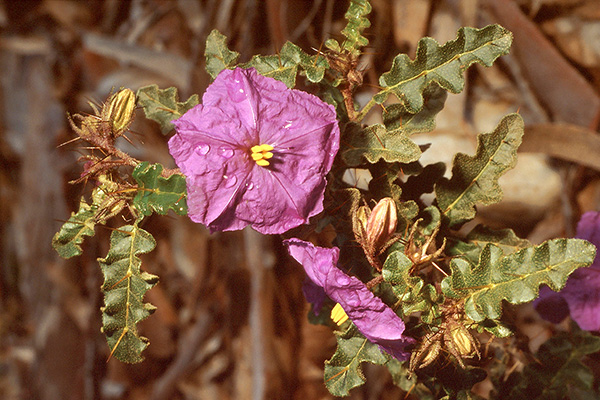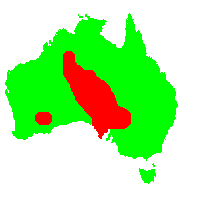General Description:
Solanum is a very large genus of about 1700 species with about 80 species native to Australia. Economically it is an important genus as it includes a number of human food crops including potato, tomato and egg plant. The Australian species include important “bush tucker” plants (eg. Solanum ellipticum) but they also include species with poisonous fruits, such as Solanum sturtianum). The toxicity status of the fruits of S.petrophilum is not clear.
Solanum petrophilum is a small shrub which may reach half a metre in height with soft stems covered with sharp prickles. The leaves also have prickles and are elliptical, grey-green, densely hairy and up to 100mm long. The very attractive purple flowers are about 25mm diameter with conspicuous yellow anthers and occur mainly in winter and spring. The yellowish fruits which follow the flowers are about 10-15 mm diameter and age to a brown colour.
Solanums, generally, are scorned as garden plants as most tend to be untidy in their growth habits and have a “weedy” appearance. However, they add a welcome splash of vivid colour. S.petrophilum is one of the more attractive members of the genus and would be worth considering for gardens in dry climates provided the plants are not accessible to children or animals. For best results, the plant should be grown in full sun.
Propagation can be carried out from seed. However, the pulp may inhibit germination and it should be washed off the seeds. Cuttings are also reported to be successful.

Solanum petrophilum
Photo: Brian Walters
 Australian Native Plants Society (Australia)
Australian Native Plants Society (Australia)













